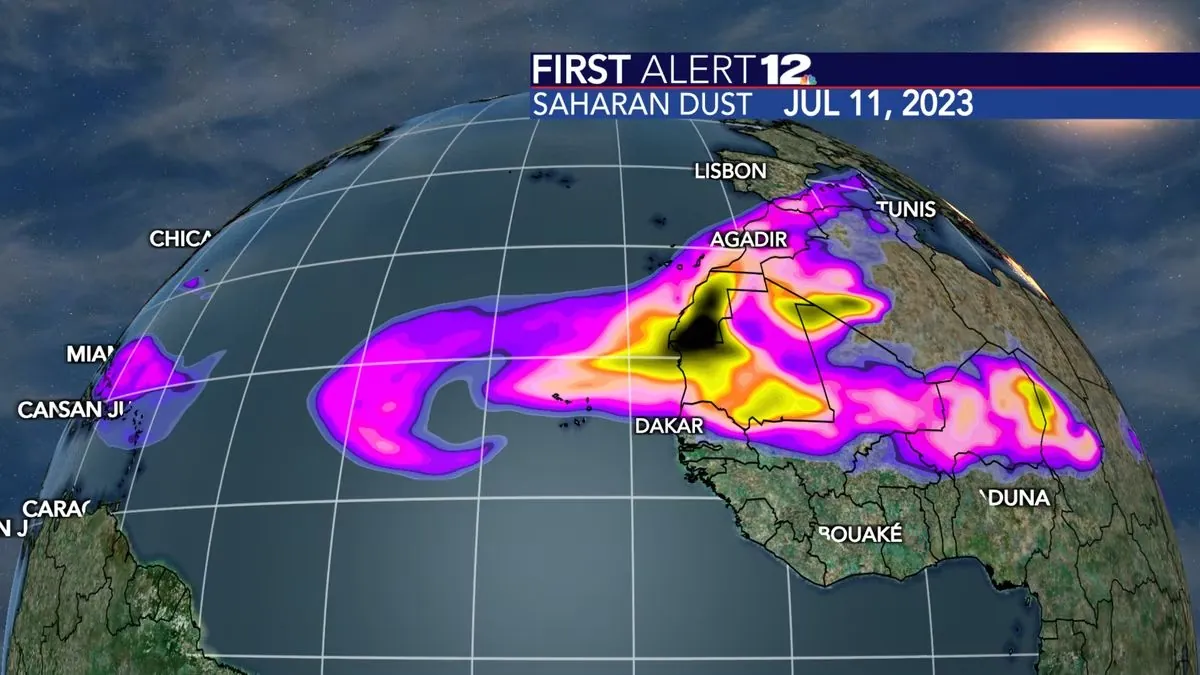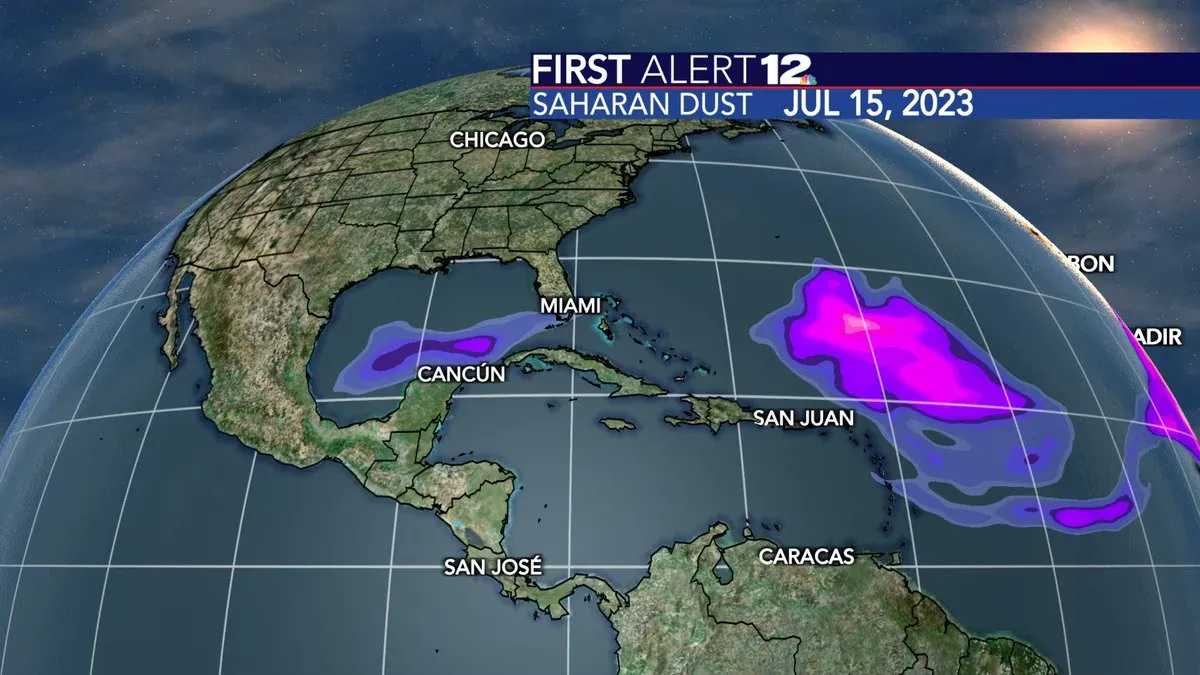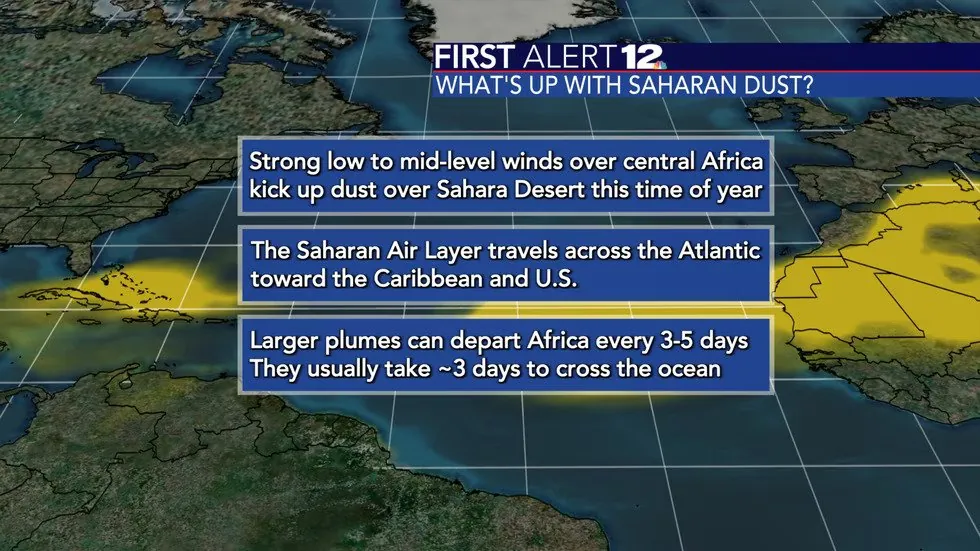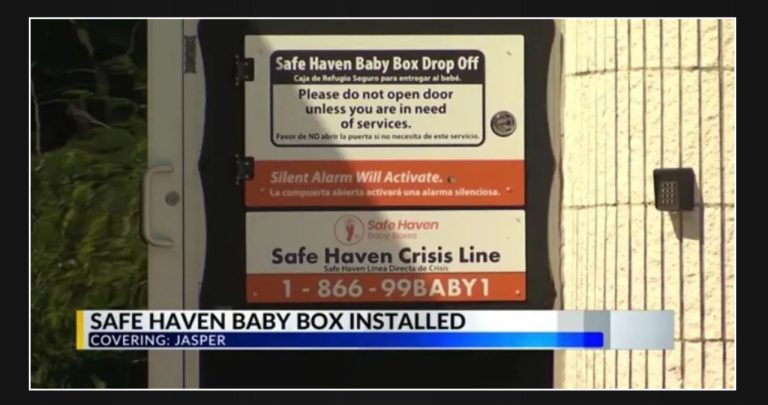Once again, it’s that time of year! Across the Atlantic Ocean, dust from the Sahara Desert in Africa is moving westward.
Unlike in past years, it hasn’t really made itself known in the U.S. or Gulf of Mexico so far this year. We’re already a week into July, so that’s a little strange.
By this time, there is usually at least one big, clear plume of dust from the Sahara that has made its way to the Gulf of Mexico and Southeast U.S.
You might think it’s impossible for dust to get from Africa to the US. Even if you don’t believe it, it happens every year. During June, July, and August, clouds of dust are always moving west off the coast of Africa. If the conditions are right, it can happen as early as May.
This happens when tropical waves and the stronger winds they cause in central Africa lift a lot of dust into the air. The easterly winds then push the Saharan Air Layer (SAL) across the Atlantic Ocean.
Each dust cloud is a different size, thickness, and concentration, but from mid-June to mid-August, dust outbreaks tend to move off the coast of Africa every three to five days. NOAA says that the dust outbreaks usually cover an area of the sky that is 2 to 2.5 miles thick and starts just over a mile above the ground.
Most of the time, the bigger and heavier dust plumes make it all the way to the Caribbean, the Gulf of Mexico, Florida, and other southern states. How much each of them affects things is different.
This year has been a little different because a smaller area of high pressure in the central Atlantic hasn’t pushed the dust as far west as usual. Also, there haven’t been a lot of big dust plumes this year.
We can use forecasting techniques to look at possible effects by looking at the amount of dust in the air and where dust storms are likely to move in the next 10 days. It’s important to know when and where the dust from the Sahara will go because it can have both good and bad effects.
If the dust concentration is high enough, it can cause air quality difficulties as well as breathing/health problems. This is especially true for people who have problems with their lungs. If there is enough dust in the air, some people may have to stay inside.
In Alabama, the amount of dust is rarely high enough to make a big difference in the air quality. One thing that happens when this Saharan dust comes in every year is that the air quality gets worse.
The minerals and nutrients in the dust are thought to help build beaches in the Caribbean and improve soils and ocean environments. Especially the small amounts of phosphorus in these things help to fertilize the Amazon Rainforest. Some experts think that the iron in the dust might feed microorganisms in the ocean by making it more fertile.
Saharan dust makes sunrises and sunsets more colourful here in Alabama. It also makes the sky look milky or hazy during the day and stops tropical cyclones from forming in the Atlantic area.
The SAL, which is hot and dusty, makes the air very dry. This is why it’s hard for tropical storms and hurricanes to form. For tropical systems to form, grow, and stay in place, they need warm, wet air. Since the air is hot, dry, and dusty, the Atlantic is usually calmer in May, June, and July.
In the next 45 days, there’s a good chance that at least a couple of bigger dust plumes will move across the Atlantic. It is hard to say if Alabama or the Gulf of Mexico will be affected or how much. What I can say is that, according to climate science, we should see more dust through the middle of August than we have so far this year.
Another headline from Alabama: Maryland swimmer who drowned in the Potomac River has been identified





